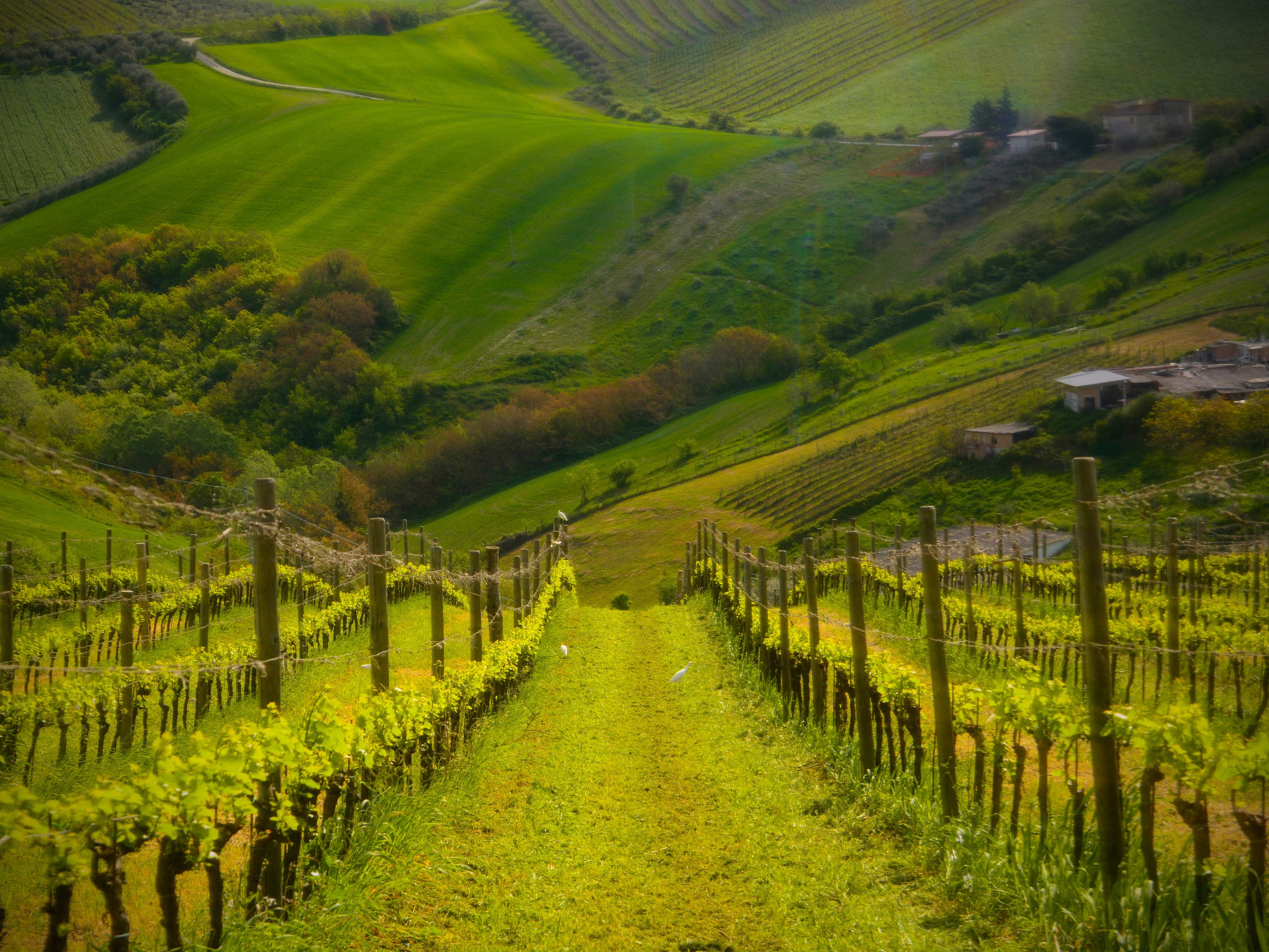
 We the Italians Editorial Staff
We the Italians Editorial Staff
Italian wine: The surprising wines of the Marche region
- WTI Magazine #186 Apr 18, 2025
-

 We the Italians Editorial Staff
We the Italians Editorial Staff
The landscape of the Marche region, located between the Apennines and the Adriatic Sea, is particularly striking. The mountain range slopes toward the coast, offering spectacular panoramic views of hills and lush valleys. This area, ideal for viticulture, has optimal conditions for growing grapes.
The combination of favorable climate and modern winemaking techniques results in wines of exceptional quality. The region boasts 5 DOCG, 15 DOC, and 1 IGT, with over 12,000 hectares of vineyards, 85% of which are in hilly areas, producing over a million hectoliters of wine annually. Sixty percent of the vineyards grow white grapes.
Viticulture in the Marche dates back to ancient times, with a broad range of grape varieties, many of which were intended for local consumption. After World War II, high-quality grape varieties were planted in regions like Jesi, Cupramontana, and the Colli Piceni, which gained official recognition starting in 1962 with the establishment of the Denominazione di Origine Controllata (DOC) system.
Today, over 200 grape varieties are grown in the Marche, with Sangiovese, Montepulciano, Verdicchio, and Trebbiano Toscano being the most prevalent. Recently, lesser-known indigenous varieties have gained recognition, while foreign varieties like Chardonnay, Merlot, and Cabernet Sauvignon have successfully integrated with local grapes.
The region’s climate varies from subcontinental in the hilly areas, ideal for Biancame, Aleatico, and Sangiovese, to continental in the interior, suited for Verdicchio and Lacrima, with marl-rich soils. The coastal Mediterranean climate, enriched with marine sediments, is perfect for Montepulciano. The DOC regions of the Marche include Bianchello del Metauro DOC, Colli Pesaresi DOC, and Verdicchio DOC, with the latter two offering DOCG wines like Verdicchio dei Castelli di Jesi and Verdicchio di Matelica Riserva.
Montepulciano is predominant in the Rosso Conero and Rosso Piceno wines. The Rosso Conero DOCG, awarded in 2004, benefits from the influence of sea breezes and calcareous soil, creating a unique red wine. The Rosso Piceno, which extends southward, is also primarily based on Montepulciano.
The Vernaccia Nera grape from Serrapetrona in Macerata, though cultivated on just 45 hectares, produces the DOCG Vernaccia di Serrapetrona, a red sparkling wine made using a distinctive winemaking method that involves drying a portion of the grapes to concentrate sugars before undergoing a second fermentation, resulting in a characteristic pink foam and unique aromas.
Other notable wines from the region include Lacrima di Morro d'Alba, an aromatic red with distinctive floral aromas, produced as both still and sparkling wines. Bianchello del Metauro is a white wine made from the Bianchello grape, while Falerio dei Colli Ascolani is based on Trebbiano Toscano, Passerina, and Pecorino grapes. The areas of Offida and Esino are known for producing white, red, and sparkling wines, with Pecorino and Passerina grapes being particularly notable. The Colli Maceratesi region is known for its white wines made from the Maceratino grape, a clone of Verdicchio.